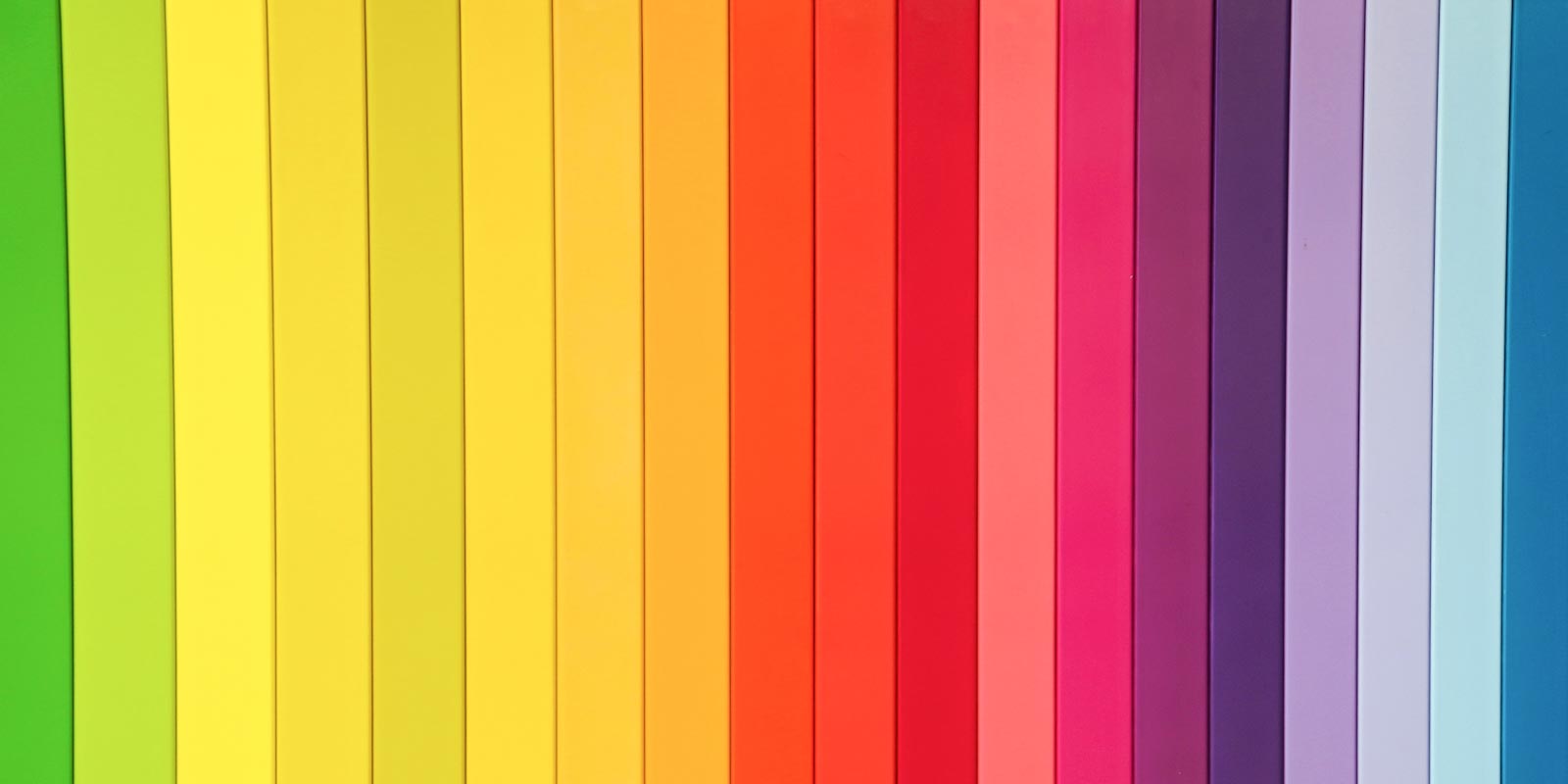
Colours are interesting to children because they stimulate their senses. Children may have a strong preference for a specific colour. They may enjoy mixing coloured paints and naming different colours.
Explore these closely-related interest topics:
EYLF learning outcomes
Colours align with learning outcomes from the Early Years Learning Framework. They inspire children's curiosity, imagination and creativity (4.1). When children mix colours they learn about colour theory and become involved with inquiry, experimentation, hypothesising, researching and investigating (4.2).
Learn colour names
While most colours don't have precise names, children can expand their vocabulary with common colour names. Remember, children may disagree on what a colour is called because everyone interprets colours differently.
Common colour names include:
Black, beige, blue, brown, cyan, gold, green, grey, indigo, lime, magenta, maroon, navy blue, olive, orange, peach, pink, purple, red, silver, tan, teal, turquoise, violet, white, yellow.
Early childhood educators can teach children the names of colours through play and everyday experiences:
- Ask children to locate colours. "Where is the yellow cup?"
- Ask children to sort colours. "Can you put the red pencils in the red pot?"
- Refer to objects by their colour. "Let's put on your red shoes."
- Talk about preferences for colours. "I love this colour purple."
- Play I spy with my little eye. "Something that is blue."
- Restrict colours in an activity. Put various items of all the same colour in a tub.
Learn colour theory
Colour theory is the art and science of colour. It can be complex but children can easily learn some basic concepts.
Colours can be organised into a colour wheel. View colour wheels on Wikipedia.
Children can make their own colour wheels by painting paper plates. They can play with online tools, like Adobe Colour.
Primary and secondary colours
The wheel has three categories:
- Primary colors are red, blue and yellow. You can't blend other colours to make primary colours.
- Secondary colors are green, purple and orange. These can be created by mixing primary colours together.
- There are lots of tertiary colours. You can create these by mixing secondary colours together.
Cool and warm colours
The colour wheel can be split down the middle to form two groups:
- Cool colours that look like ice or the ocean.
- Warm colours that look like the sun or fire.
Hues, tints, shades and tones
Hue refers to pure colours or the primary, secondary and tertiary colours on a colour wheel. But we can change hues even further by adding black and white.
Colour palettes
The colour wheel can be used to create colour schemes or palettes which are a group of colours that look good together. While there is science behind colour combinations, people have different preferences.
Invite children to paint many squares of paper in different colours, like the colour cards at hardware stores. Ask them to develop their own colour palettes by choosing three or four colours that look good together. Remember colour schemes are a personal preference.
Mixing colours
Give children coloured paints and show them how to:
- mix them into new colours
- add white to any colour to make it lighter
- add black to any colour to make it darker
- change the tone of any colour by adding both black and white.
- experiment with the ratios of colours.
Explore colour in art
Introduce children to artists who are known for their use of colour:
- Ken Done is well known in Australia for his colourful paintings.
- Beatriz Milhazes is a vibrant Brazilian painter and collage artist.
- Lara Merrett paints large-scale abstract paintings on drop sheets.
- Antoni Miralda made an artwork from coloured bread.
The learning experience:
- Show children colourful artworks.
- Talk to children about how the artworks were made.
- Talk to children about how and why the artist used colour.
- Ask children if they like or dislike an artwork.
- Encourage children to create their own artworks using colour.
Learning environments
- Give children sensory experiences involving colour, like hanging rainbow-coloured ribbons from trees outside.
- Offer children a wide variety of colours in their painting and playdough activities, not just primary colours.
- Reflect on the influence colours have on your children's learning. Is your classroom calming or too stimulating?
Resources
Picture books
- Where Is The Green Sheep? by Mem Fox and Judy Horacek
- Collecting Colour by Kylie Dunstan
- Mix It Up! by Hervé Tullet
- The Colour Monster by Anna Llenas
- Elmer by David McKee
Music
Teeny Tiny Stevies: Boy or girl colour
